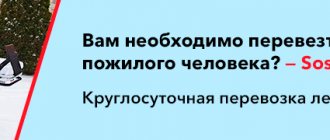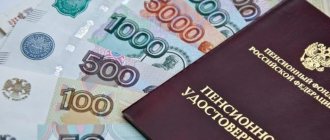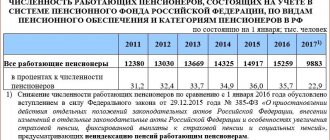What is a food set?
There is no official document throughout Russia on providing assistance in the form of a set of products to people. This decision can only be established by regional authorities. For example, the mayor of Moscow ordered to provide some categories of Muscovites with food packages.
But there is no separate document that spells out all the legal norms. Several instructions defined the responsibilities of “food” assistance to provide for the elderly and low-income people.
In some regions of Russia, such decisions were made not only by local authorities, but also by party members. In addition, in almost every region there are separately created volunteer help centers that you can call and ask for help.
If we put everything that has been said together, it turns out that not all residents of Russia can receive a food package. And we are not talking about the category of citizens, but according to their place of residence.
If a Russian wants to receive a food package, then it is worth checking whether such support is available in their region. How to do it? Read further in the article.
In addition to the food package, people can receive other types of assistance depending on the subject of the Russian Federation:
- delivery of medicines (at the expense of the Russian himself, but exceptions are possible);
- delivery of goods necessary for life (not food);
- walking pets;
- assistance in solving simple everyday issues;
- delivery of firewood for those living in private houses or dachas;
- informing about the situation in the country;
- psychological assistance (personal);
- installation of programs and instant messengers for communicating via the Internet (for those who cannot);
- computer training and others.
Most often, such help can be received by those people who find themselves in a difficult life situation. It is worth noting that there is no need to insist on receiving help.
. This is due to the fact that this support is provided by free volunteers; it is not provided for by the state. Consequently, it is they who will consider the importance and priority of providing this or that assistance.
The entire economy of the country is built on a minimum set of food products. But this is a survival kit
At the end of January, citizens complained to the president about the contents of the so-called food basket. It is called a key tool for assessing the standard of living of the population, although the minimum set of food products formed by officials, calculated by Rosstat and approved by the State Duma is not an objective indicator, but a conditional one. What makes it significant is only the linking of the final cost of the set with the minimum wage (minimum wage). Nevertheless, the complaint was made publicly (there is not enough meat and fish in the assortment, too many potatoes, bread and cereals), and the president supported it - it needs to be reconsidered. According to all the laws of administrative logic, we were talking about an increase in the price of the conditional minimum set, which would seem inevitable. However, it turned out that everything is not so. The response to the call made at the highest level to audit the contents of the basket was the Ministry of Labor’s proposal to reduce the minimum wage, which is directly related to its cost. And - at the same time - diversify the basket with more expensive “healthy food products”. “Ogonyok” tried to understand how to explain this and what actually stands behind the ongoing discussion around the fateful basket.
Alexander Trushin
In the second half of last year, Rosstat reflected a phenomenon unprecedented in post-Soviet Russia: starting in July, the cost of the minimum food package began to decline sharply. By December 2020, it fell by 300 rubles, to 4,067 rubles. This has never happened before; the basket has been growing since 1992. Sometimes faster, sometimes slower. Let's say, after the crisis of 2014, the cost of a minimum set of products jumped by as much as 653 rubles. In general, the cost of the basket has increased over 19 years (according to Rosstat) by 4.9 times: from 883 rubles in June 2001 to 4,367 rubles in June 2019.
Inflation over the same time increased by 5.33 times. This is important: until now, the increase in the cost of the food basket was explained by inflation and generally coincided with it. This is why the reduction in prices at the end of 2020 was puzzling: inflation last year (according to Rosstat) was 3 percent, and the cost of the food basket did not increase by this figure, but fell.
Miracles of statistics that can turn stable stagnation into timid growth, or just miracles? The question is interesting and, most importantly, entailed an immediate administrative reaction - last week the Ministry of Labor prepared a bill to reduce the minimum wage (and it is tied to a basket) from the current 12,130 rubles to 10,609. The fight against poverty, it seems, began with the usual statistical exercises, which have long been fashionable, because if you lower the poverty threshold, then there will automatically be fewer poor people.
Put the puzzle together
Let's start with the fact that in domestic realities the very concept of “poverty” (as an economic and social category) is not taboo, of course, but it is thoroughly blurred. At the level of government acts and official figures, they speak about it as if allegorically, hiding behind a palisade of conceptual synonyms, one of which is the food basket. But there is also a consumer basket (plus food, a minimum set of goods and services in approximately equal proportions, 30–35 percent each), and the minimum wage, also known as the minimum wage, is often mentioned.
What is the financial condition of Russians, statistical and real?
“The Ministry of Labor,” says Andrei Pokida, director of the Research Center for Socio-Political Monitoring at the Institute of Social Sciences of the Russian Presidential Academy of National Economy and Public Administration, “annually sets the minimum wage. For 2020, it was set at 12,130 rubles (no one managed to receive this money, and there was already an initiative to reduce it.— “O”
). The same amount is our subsistence minimum. It is based on a minimum grocery set. Goods and services for approximately the same amounts are also added there. The paradox is that none of our cart sections correspond to real prices. In other words, our poverty criteria are defined at the level of minimal physiological needs. This is not a standard of living, but a level of survival. It is really impossible to exist on that kind of money.
The expert adds: poverty is measured from the level of not just a bad life, but the worst life itself. And it is this level of survival that determines the social policy of the state today. Nowadays, we consider citizens whose income is below the subsistence level to be poor. There are 18.5 million of them, as Tatyana Golikova, Deputy Chairman of the Russian Government for Social Policy, said last week (in percentage terms, this is 12.7 percent of the country’s population). Moreover, the majority of the poor are families with children.
From poverty to poverty
Alexander Safonov, professor at the Department of Personnel Management at the Financial University under the Government of the Russian Federation, back in 1988 participated in the development of a system of consumer budgets. Then the country's leadership decided to create some kind of normative and statistical methodology for determining and planning the production of the required volume of goods and services in the country, as well as for determining wage levels.
— We have developed three types of consumer budgets. The first, the lowest, determined the level of human survival. It contained an extremely limited range of products that provided for the life of a person not engaged in work. Essentially the level of poverty. This type of budget should not have been taken into account when determining salaries at all. The second type is the minimum consumer budget. It defined the boundary between poverty and poverty and included four sections: food, clothing, household goods and services. The third type was the rational budget, which determined the boundary between poverty and the average income of a person. Here, too, there were the same four sections, but filling this budget made it possible to ensure a normal, fulfilling human life. Moreover, these consumer budgets were divided by age, gender and type of work - physical or mental.
Corresponding Member of the Russian Academy of Sciences Georgy Kleiner on the balance between the consumer basket and the minimum wage
Under Soviet rule, these standards were not introduced. They returned to the plot in the “new Russia”. And at the very start: the concept of “consumer basket” first appeared in the country in 1992 by order of Boris Yeltsin. The basket was based on the first of the developed types of consumer budgets - minimal, at the level of beggarly survival. The authorities explained this choice: it was necessary to support the population who found themselves without a livelihood after the Pavlovian monetary reform of 1991. Let us remember that there were more than 49 million poor people at that time. And the state budget was also empty then.
Yeltsin apparently understood the flaw of his decision - after all, the level of poverty was taken as the basis for social policy. He then made a reservation that the basket was a convention that did not reflect the real needs of people, but it was a temporary measure, and soon, he promised, we would move away from it. But there is nothing more permanent than temporary: we have been living with this convention for 28 years: it survived the “fat” zeros, the crisis years of the tenths and 2014–2015, and now it has entered with us into the age of the digital economy. However, some experts express doubts whether our time can be called digital if half of the population does not have money for gadgets, which have long ceased to be a luxury, but have become an urgent necessity.
Of course, the consumer basket was revised from time to time. Something was added to it, for example, in addition to food products, industrial goods and services appeared there. The last time there was a “revision” was in 2012: the State Duma adopted Federal Law No. 227-FZ “On the consumer basket as a whole for the Russian Federation.” By the way, it was said there that the basket should be reviewed every five years. But in 2017 they didn’t do this - they simply extended the law until the end of 2020.
But the essence remained the same: the basket recorded the level of poverty. According to Alexander Safonov, “the approach remains the same. They determine how many calories a working person, how many a pensioner and how many a child should consume - per day, per month, per year in order to survive and not die of hunger. This amount of calories is distributed among proteins, fats and carbohydrates. And then, when the cost of living is determined, the cheapest products are adjusted to these calculations.”
For example: seven pairs of socks for a year and five months. Nine underpants for two years and five months. It doesn’t say what kind of socks and underpants. It also does not say which “pasta”, which meat or which vegetables are considered in the consumer basket.
And it is impossible to understand where the cost of the entire basket of 12,130 rubles or the food set of 4,367 rubles came from. No expert can answer this question. There are only assumptions that Rosstat employees go shopping and see what is selling for how much.
At the end of May last year, Rosstat published the report “Income, Expenses and Consumption of Households.” The study covered 48 thousand households. The result: 48.2 percent of Russian families only have enough money for food and clothing. There are no resources for durable goods - a refrigerator, a washing machine, furniture ("Hard edges of stability", see "Ogonyok" No. 3 for 2020).
More meat, comrades!
If you eat as the food basket recommends, you can stretch your legs
Photo: Yuri Dyakonov, Kommersant
However, we are so accustomed to the convention called the “consumer basket” that we already consider it a reality. So last week, in the small town of Usman in the Lipetsk region, people turned to the president with a request to “add some meat and fish to the consumer basket.”
The question of “revision” has been hanging in the air for a long time. The Institute of Socio-Economic Problems of Population of the Russian Academy of Sciences developed and presented in June last year a new method for calculating the consumer basket. It is proposed to increase the amount of meat and fish by a third, “put” more eggs and milk, vegetables and fruits there, add vitamin and mineral complexes, take into account the costs of medical services, education, wellness, legal support and insurance, as well as the cost of eating out . And much more. They even calculated the cost of such a modified consumer basket: it will all cost 31,087 rubles. Almost three times more than now.
At the same time, at the beginning of last year, a commission was created in the Ministry of Labor and Social Protection, which was supposed to make its own calculations of the cost of the consumer basket. It was promised that these calculations would take into account the latest methods for calculating the poverty level (what these new methods were was not said). One can only assume that the new basket will be heavier and more expensive. It should be submitted for approval to the State Duma this spring.
There is no doubt - they will present it. But we are talking about a basket, which, experts say, is... a complete fiction. Even Rosstat calls it a “conditional (minimum) set of food products.” Conditional! Because the absolute cruel reality is that the proposed expanded range of sets with the cost of a basket tied to the subsistence level is “not friendly.” And today this minimum, as well as the minimum wage equivalent to it, is reduced from 12,130 rubles to 10,609 rubles.
Andrei Pokida believes that the minimum wage should be two to three times higher than the subsistence level. We must strive for this, albeit gradually. Then it will be possible to say that the solution to the problem of poverty in our country will somehow move forward. In any case, people will be able to spend their income not only on food and clothing, but also on education, culture, and health. This will certainly stimulate consumer activity among citizens. And today this is the opinion of a number of experts involved in social issues. And the new Minister of Labor and Social Protection noted that the methodology for calculating the cost of living will be changed.
How the amount of meat in the Russian consumer basket decreased
But will there be any return from such unanimity? After all, if the new cost of the consumer basket is multiplied by three, you get crazy money. And where can I get them? What about inflation, the horror story that even the Central Bank fears?
And now the “expert ear” is catching interesting nuances: the initiative of the Ministry of Labor to recalculate the cost of the consumer basket is good, of course, but the new minister Anton Kotyakov did not speak in detail about either the basket or the minimum wage when setting new departmental tasks. But he introduced a new concept of “need” and called for its legislative definition. It looks like there's a new element to the basket plot.
House on the sand
For now, however, all the conversations and discussions are about it—the conditional basket. And it turns out that the social sphere and, in general, the entire economy are built on this convention.
“If the cost of living is low,” says Alexander Safonov, “then the basis of the economy is based on total poverty and physical degradation of workers. And this, in turn, creates low consumer demand. People with low incomes are forced to buy the cheapest goods and products. And these are by no means healthy products; they contain many different preservatives and sublimates. Low-quality products are brought to us from China. This means that we are making our economy uncompetitive because our products are more expensive. Poverty is a drag on our economy. Our industry is stagnant because there is no demand for domestic products.
At the same time, oddly enough, there are benefits from poverty.
How the consumer basket has changed in Russia
Read more
- Low demand from the poor makes it possible to control inflation. But not by inflation itself, but by the figure that statistics show,” says Vladimir Osipov, professor at MGIMO. “That very “conditional set of food products” does not say which products are meant; just pasta or just potatoes are indicated. And if these are bad products that no one buys, naturally their prices will decrease. These lowest prices are reflected in the statistics. In addition, a number of goods from the basket, for example bread, are considered strategic, and the state ensures that prices for them are not inflated. But people still try to buy quality goods whenever possible. Accordingly, the demand for them is growing, and so are prices. And the population actually spends more on food than the food basket suggests. But this is already beyond the scope of observation. It turns out that the inflation rate is paper and does not in any way reflect true prices. But we can report that inflation is within the target. The reports are in order, but in reality it turns out that even according to statistics, 48 percent of the population can only afford food and clothing expenses.
And finally, one more important point, perhaps the most significant.
The minimum wage, and in fact the living wage, is the starting point for the entire wage system in our country. And it is precisely the low minimum wage (at the level of poverty) that leads to the critical stratification of our society.
“The lower the base, the lower the payment for all other categories in this system,” says Alexander Safonov. “And this is very beneficial for employers.” As a result, in production, in the service sector, in education, in healthcare, and throughout our entire economy, incorrect income differentiation is being formed. It allows for gigantic gaps in the salaries of top managers and ordinary workers. And if workers have to be paid more, then business owners' margins will shrink and they will have to think about increasing labor productivity. If it is reasonable, then the minimum wage should not be related to the subsistence level. It should be based on real labor costs, and not on the level of survival. Then there will be a more equitable distribution of income and social inequality in society will decrease...
Who in Russia considers themselves poor?
World experience shows: linking economic mechanisms to the consumer basket is a solution for very poor countries, mainly African and Asian. In most EU countries, a different methodology is used: people who spend 50 percent of their income on food are considered poor. This is a relative indicator, which is determined by statistics based on household surveys. There are now 11 countries in the EU with zero poverty. In other European countries it is 1 percent, in the poorest countries it is a maximum of 3 percent. Let us remind you that the official figure is 12.7 percent.
Experts say that this European method of counting the poor was discussed in our Ministry of Labor, but was not adopted. It’s clear why: after all, then the number of poor people in our country would immediately jump by 30 percent. Well, who needs this?
As for the addition of meat and fish to the conditional (minimum) set of products, this will be on paper. Exactly until the question of whether people with low incomes will be able to buy this with their salaries remains unanswered.
Who is entitled to
But in addition to a person’s place of residence, separate criteria for local residents are established to receive a food package. Not everyone can receive this type of help. It makes no sense to announce the categories of local residents of all regions. Each region independently determines the list of persons who can be classified as particularly needy. But in most cases these include:
- people over 65 years of age;
- disabled people;
- citizens with severe chronic diseases;
- low-income families.
For example, we can take Moscow and the Moscow region. In these constituent entities of Russia, food packages are issued to four categories of local residents:
- pensioners over 60 years of age;
- low-income families;
- families with children;
- schoolchildren who have the right to eat free meals at school.
“Food” assistance is provided at the expense of the local budget, that is, free of charge. But there are certain criteria that must be met in each category.
In order for a pensioner
received a food package, the following conditions must simultaneously be met:
- age over 60 years;
- living alone;
- income less than one minimum wage per pensioner.
Food aid is delivered to such local residents first. If all conditions are not met, the product package may be delivered at a later date at the discretion of local authorities.
Regarding disabled people
Moscow and the Moscow region also distinguishes three conditions:
- I disability group;
- age over 60 years;
- compliance with the self-isolation regime.
For low-income families
, of course, the main criterion is an average per capita income of less than one subsistence minimum per capita established in Moscow or the Moscow region.
In addition, parents of low-income families must be recipients of child benefits. Everything is logical here. Local authorities will not know if a family is low-income unless they have previously applied
.
If there are children in the family,
then this family has the right to receive a food package if at least one of the following conditions is met:
- at least two children of preschool age;
- disabled child;
- one or both parents have lost their jobs;
- receives child benefits in accordance with the law in Moscow or the Moscow region “On measures of social support for families and children.”
In addition, residents of the capital and the surrounding region whose families have schoolchildren
, food assistance is also provided. The only condition is that the child has the right to free meals at school. That is, such families include:
- large families;
- low-income;
- children who study in sports classes;
- children who are registered at a tuberculosis dispensary;
- if at least one of the parents or guardians has lost their job.
Thus, the local government decided to compensate for free school lunches for students. School employees are responsible for preparing a set of products and delivering them. Moreover, the food package is issued not for a family, but for each schoolchild.
It is worth asking for help without a request.
If the food package has not been delivered, and the person belongs to the category of recipients, then you can call the local administration and clarify this issue. They will explain who to contact.
In St. Petersburg, the Krasnoyarsk Territory and the Yaroslavl Region, decisions were made to issue food packages to students in lyceums and colleges. “Food” aid was delivered to the student’s place of residence in mid-April.
Regulatory acts regulating the issuance of food packages to pensioners
Organizing the delivery of goods to elderly people is the responsibility of regional (city) ministries (departments) of labor and social protection. They can delegate some of their functions to volunteer and charitable institutions. And also increase the number of products included in the set ( ComponentsThe process of typing in publishing Character set (diacritical set) Chip set (chipset) Command set (instruction set) in programming Ship set - structure
) goods for quarantine for pensioners.
In order to receive a food package, you need to contact employees of the Ministry of Labor and Social Protection of the region or contact a company cooperating with the department.
The final list of products is approved by the local administration based on the advice of Rospotrebnadzor on the basis of Federal Law 53 and the Resolution “On strengthening supervision of catering” No. 01/13274-2018-27. All trade names included in the set must have a certificate of state registration . According to current legislation, food products may not comply with GOST R standards; compliance with the Technical Regulations is sufficient.
But Rospotrebnadzor recommends that the compilation of kits be governed by the following standards:
- canned meat - GOST 32125-2013;
- porridge - GOST 572-2016, GOST 276-60;
- sugar - GOST 21-94;
- Sunflower oil - GOST 5471-83.
For impartial reasons, first class products may be replaced by second class.
What does the food set consist of?
There is no exact list of food packages that are provided to especially needy categories of citizens. Each region and institution that creates the set decides independently what to put in it.
However, there are some products that are included in the kit in most cases:
- sugar;
- cereals;
- pasta.
If you look at the statistics for all regions, this set also includes:
- milk or other dairy product;
- cookie;
- tea;
- flour;
- vegetable oil;
- canned vegetables, fish or meat.
For schoolchildren, the set could include chocolate or condensed milk. In addition, coffee was included in the food package for Moscow residents.
I would like to pay special attention to some regions:
- Pskov – a set of products was replaced with financial assistance in the amount of 5,000 rubles;
- St. Petersburg - the free kit included medicines from a volunteer organization;
- Voronezh region - in addition to products, the set included shampoo, soap and washing powder;
- Lipetsk region - the set included not only food, but also detergents and cleaning products.
List of products in the consumer basket
The legislative composition is regulated by Federal Law of the Russian Federation No. 227-FZ, which entered into force on January 1, 2013 and is revised, according to this law, at least every five years. According to Russian standards, the cost of a monthly set of products should not exceed 50% of income, while in America and most European countries, this figure should not exceed 20%.
According to this law, the food basket in Russia from the beginning of 2013 includes the following items, see table 1:
Table with a list of products included in the food basket in Russia
| Name | Able-bodied citizens | Childhood | Retirement age |
| Bread, cereals, flour products | 126 kg 500 g | 77 kg 600 g | 98 kg 200 g |
| Potato | 100 kg 400 g | 88 kg 100 g | 80 kg |
| Vegetables (cabbage, cucumbers, tomatoes, etc.) | 114 kg 600 g | 112 kg 500 g | 98 kg |
| Fresh fruits | 60 kg | 118 kg 100 g | 45 kg |
| Sugar and sweets (candy, cookies, etc.) | 23 kg 800 g | 21 kg 800 g | 21 kg 200 g |
| Meat (pork, beef, poultry) | 58 kg 600 g | 44 kg | 54 kg |
| Fish (fresh, herring) | 18 kg 500 g | 18 kg 600 g | 16 kg |
| Milk products (kefir, sour cream, milk itself, etc.) | 290 kg | 36 kg 700 g | 257 kg 800 g |
| Chicken eggs | 210 pcs. | 201 pcs. | 200 pcs. |
| Margarine, vegetable oil, and other fats | 11 kg | 5 kg | 8 kg |
| Other products (salt, spices, tea) | 4 kg 900 g | 3 kg 500 g | 4 kg 200 g |
Source: Decree of the Government of Russia dated January 29, 2013.
The current structure is of a very average nature: according to it, it turns out that the average resident of the country, for a normal existence, must consume dairy, bread and vegetable products most of all. And the amount of meat included in the monthly food basket for an adult is 4.88 kg (162 g per day), and fish – 1.54 kg (385 g per week), of which 17.5 kg of fresh fish , and only 1 kg of herring per year can be afforded by a person with minimal income according to Russian standards. Well, the British minimum even includes chicken Kiev and champagne, and the German minimum includes ordering homemade pizza and homemade buns.
Submission deadline
The deadline for providing food assistance in each region is set separately. For example, in Moscow and the Moscow region, such assistance can be received until June 15. It is possible that if quarantine conditions are not eased in the near future, the delivery time for the food package may be extended.
Initially, the set of products was designed for a period of 1 calendar month. But our quarantine has already lasted about 2 months. A logical question arises that interests many: will the set of products be delivered once or every month? There is no exact answer here. It is worth contacting the administration of your city or region directly by phone for more information.
Volunteer assistance can be received several times. The main thing is to contact the help center for it.
Who can count on help from the state
Three categories of citizens of retirement age can count on receiving food in Moscow and the region:
- disabled people of the first group (over 60 years old);
- persons without relatives (over 60 years old);
- persons with a low monthly income (less than two regional subsistence levels).
To receive a set of products, you must contact your local social security authorities. They compile lists of those in need, and then volunteers deliver everything they need right to their homes.
Where to go for help?
As mentioned earlier, “food” assistance is provided on a non-declaratory basis. But if a person is particularly in need, then you can contact:
- for schoolchildren - to an educational institution;
- for other categories of citizens - to the local administration or to the department of Social Protection of the population in the city or region.
If a person wants to receive volunteer help, then in this case it is necessary to find the telephone number of volunteers via the Internet. It is worth noting that social assistance from volunteers may include the delivery of food and essential goods, as well as medicines. They are not required to bring a free set of products
for those in special need upon request.
Telephone number of social volunteers for residents of Moscow and the Moscow region. Opening hours: daily from 08:00 to 21:00.
There is also a nationwide channel for requesting assistance. This action is carried out by the All-Russian Popular Front, Volunteer Associations. To request assistance, residents of any region of Russia can contact the phone number 8-800-200-34-11
.







